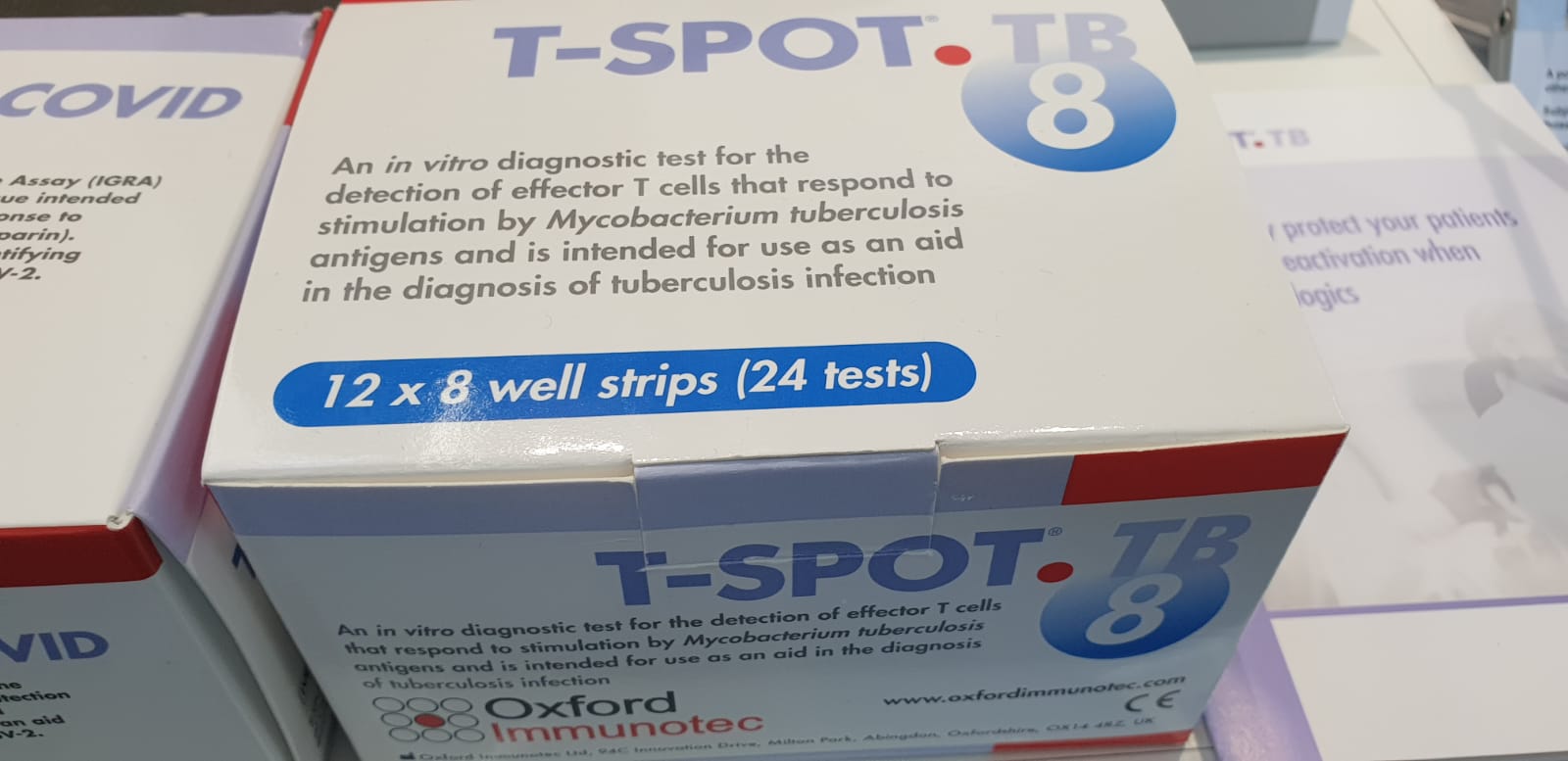Background:
The diagnosis of tuberculosis (TB) remains difficult. Previous reports have shown that the T-SPOT.TB assay may be a more promising diagnostic tool for TB; however, further study is needed to assess the diagnostic value of T-SPOT.TB for specific populations in a high-prevalence setting.
Methods:
In this present study, we conducted stratified and comparable analyzes to explore the clinical value and limitations of the T-SPOT.TB assay in TB diagnosis in a high-prevalence TB setting in southern China. A total of 413 subjects were included in the study, including 163 with pulmonary tuberculosis (PTB), 39 with extrapulmonary tuberculosis (EPTB), 106 with non-tuberculosis pulmonary diseases (NTBPD), 20 medical staff, and 85 healthy controls.
- Subjects
In total, 20,332 samples were collected from patients with suspected TB. The average age of the participants was 53.15 ± 18.16 years, and they were admitted to the First Affiliated Hospital of Xi’an Jiaotong University from July 2013 to May 2017. Specifically, there were 11,453 males between 6 months and 96 years of age ( mean age: 54.70 ± 18.45), and 8,879 women between 3 months and 96 years (mean age: 52.53 ± 17.71 years). All patients were enrolled according to the following criteria: 1) subjects did not have heart, liver, or kidney disease and did not have HIV infection; 2) patients were suspected of having TB; 3) The patients were not taking any therapy involving immunosuppression or potentiating medication. Exclusion criteria included: 1) cases lost to follow-up; 2) cases lost due to death; 3) cases that were not diagnosed as TB at endpoints.
Informed consent was obtained from all participants (informed consent of patients under 16 years of age was obtained from their guardians), and this study was approved by the ethics committee of the First Affiliated Hospital of Xi’an Jiaotong University (NO .XJTU1AF2018LSK-161).
- Diagnostic criteria for different groups.
In light of the diagnostic criteria for pulmonary TB established by the Ministry of Health of the People’s Republic of China, the patients included were grouped as follows: 1) LTBI: the tuberculin test was positive and patients who had no history of the Bacillus Calmette – Guerin (BCG) vaccination; or T-SPOT.TB test result was positive and there was no clinical manifestation of TB and corresponding evidence of aetiology, pathology, and imaging. 2) Active TB: This required that tubercle bacilli be detected from bacterial cultures or sputum smears, that caseate or giant Langhans cells be seen by pathological examination, and that anti-TB therapy is effective with relevant imaging support.
In addition, active TB was divided into three subgroups based on pathological site: pulmonary TB (PTB), pulmonary and extrapulmonary TB (PETB), and extrapulmonary TB (EPTB). 3) Old TB: this required that subjects with a history of TB were cured, but pathological changes were found according to imaging diagnosis, that no symptoms of TB intoxication were observed and the aetiology and pathology tests were negative, and that patients with these characteristics were diagnosed with “other diseases”.
- Sample collection and handling
Peripheral venous blood samples of 5 ml were obtained from patients with suspected TB using lithium heparin anticoagulant tubes. Mononuclear cells were then isolated to prepare a cell suspension. Finally, the T-SPOT.TB assay (Oxford Immunotec, Ltd., Abingdon, UK) was performed as follows: Briefly, the cell suspension was plated onto T-SPOT.TB plates and incubated with ESAT-6 ( specific antigen), CFP-10 (specific antigen), positive control or negative control, respectively. Next, 100 μl of cell suspension were added to the corresponding microwells and cultured in an incubator with 5% CO2 at 37 °C.
The microwells were then washed four times with phosphate-buffered solution (PBS) before 50μl of secondary antibody solution was added to each well, and the assay was incubated for 1h at 2–8°C. Subsequently, 50 μl of the chromogenic agent were added and the plate was processed avoiding light for 7 to 12 min before finishing with distilled water. The number of dots was measured, where one dot represented a T cell that could secrete specific cytokines. The final interpretation of the results was according to the following criteria: 1) The results were considered positive in two scenarios: first if the number of spots in the negative control group was less than 6, and the number of spots in CFP -10 or ESAT-6 wells was 6 points higher than that of the negative control.
Second, if the spot count in the negative control group was 6 to 10, and the number of CFP-10 or ESAT-6 spots was more than double that of the negative control. 2) Results were considered negative if the spot number did not meet the above criteria and the positive control performed normally. Finally, we performed statistical analyzes of the number of points and the points represented the proportion of the total points (composition rate) in different types of diseases (LTBI, active TB and old TB) and different subgroups of active TB (PTB, PETB and EPTB). )
Results:
According to T-SPOT.TB, there was a high incidence of latent TB infection (LTBI) in the general population in southern China, especially in the NTBPDS and medical staff. The T-SPOT.TB had a high yield in the diagnosis of active TB (ATB) in a population with a lower risk of TB infection such as the general population, however, the T-SPOT.TB for the diagnosis of ATB in the High-risk population of TB infection populations involving close contacts such as pulmonary disease (PD) patients or medical personnel is unreliable due to LTBI interference.
Under this condition, the value of exclusion from the trial appeared to be better than that of acceptance. We believe that T-SPOT.TB is suitable for screening for both EPTB and ATB combined with diabetes mellitus (DM). However, we found the sensitivity of T-SPOT.TB in the smear-negative population was not as high as in the smear-positive population.
Conclusions:
T-SPOT.TB test results should be interpreted with caution in combination with subject characteristics in a high-prevalence setting.
Keywords:
T-SPOT.TB; diagnostic tool; tuberculosis (TB); Extrapulmonary TB (EPTB)

